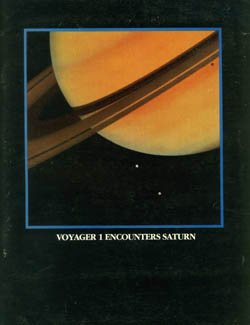
Voyager 1 Encounters Saturn
Publisher: NASA 1980
Number of pages: 51
Description:
The pictures assembled in this publication are a part of the rich and varied harvest of information returned by Voyager 1 across nearly a billion miles of interplanetary space. These images are of great beauty as well as great scientific interest, serving to remind us of the awesome and breathtaking dimensions of the solar system we inhabit.
Download or read it online for free here:
Download link
(multiple formats)
Similar books
 Lunar Orbiter Photographic Atlas of the Moon
Lunar Orbiter Photographic Atlas of the Moonby D.E. Hughes, J.K. Bowker - Lunar and Planetary Institute
This Atlas is considered the definitive reference manual to the global photographic coverage of the Moon. The images contained within the atlas are excellent for studying lunar morphology because they were obtained at low to moderate Sun angles.
(11956 views)
 Voyage to Jupiter
Voyage to Jupiterby David Morrison, Jane Samz - NASA
Few missions of planetary exploration have provided such rewards of insight and surprise as the Voyager flybys of Jupiter. Some of the spirit of excitement and connection is captured in this volume. Its senior author was a member of the Imaging Team.
(5278 views)
 Origin of the Moon
Origin of the Moonby W. K. Hartmann, R. J. Phillips, G. J. Taylor - Lunar and Planetary Institute
Contents: History; Dynamical Constraints; Geochemical Constraints; Geophysical Constraints; Theories and Processes of Origin: Lunar Formation Involving Capture or Fission; Lunar Formation Triggered by Large Impact; and more.
(11667 views)
 Lunar Stratigraphy and Sedimentology
Lunar Stratigraphy and Sedimentologyby John Lindsay - Elsevier
Lunar Stratigraphy and Sedimentology is an attempt to organize some of the information now available about the sedimentary rocks forming the lunar crust in a way that allows some comparison with the terrestrial sedimentary environment.
(12151 views)